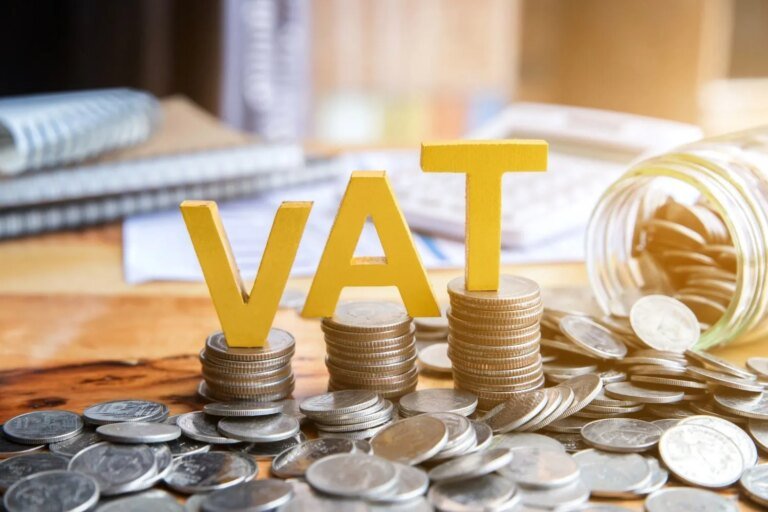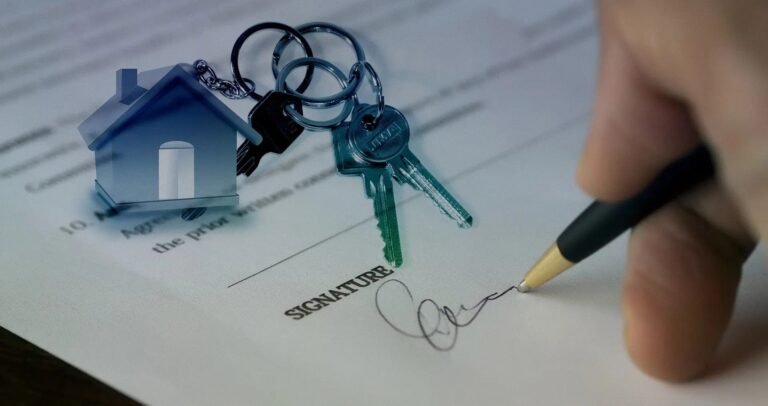(Rates published by HMRC on 23 September 2022)
Stamp Duty is a tax levied by the UK government on the purchase of a property or other assets over a certain price in England and Northern Ireland (separate taxes apply in Wales and Scotland).
Here, we will discuss tax rates on:
-
Stamp duty and land tax (SDLT)
-
Purchase of shares
in England and Northern Ireland.
Stamp Duty Land Tax (SDLT)
Stamp Duty Land Tax (SDLT) is a levy that you pay to HMRC on land and property transactions in England and Northern Ireland.
SDLT Rates and Thresholds
Stamp Duty Land Tax (SDLT) rates and thresholds are different depending upon whether the property is used for residential, non-residential, or mixed-use purposes.
SDLT Rates for Residential Property
|
Purchase Price/Lease Premium/Transfer Value |
SDLT Rates for a Single Property |
SDLT Rates for Additional Property |
|---|---|---|
|
Up to £250,000 |
0% |
3% |
|
£250,001 to £925,000 |
5% |
8% |
|
£925,001 to £1.5 million |
10% |
13% |
|
Over £1.5 million |
12% |
15% |
|
Purchase Price/Lease Premium/Transfer Value |
SDLT Rates for a Single Property |
SDLT Rates for Additional Property |
|---|---|---|
|
Up to £250,000 |
2% |
5% |
|
£250,001 to £925,000 |
7% |
10% |
|
£925,001 to £1.5 million |
12% |
15% |
|
Over £1.5 million |
14% |
17% |
If you’re not present in the UK for at least 6 months during the 12 months before you make the purchase of a residential property, then you’re not considered to be a UK resident for the purpose of SDLT, and therefore, you’ll have to pay a 2% surcharge as shown above.
Additional Rate:
If you’re purchasing additional residential property, then this means that you’ll own more than one home. Therefore, you’ll have to pay a 3% surcharge on top of standard SDLT rates as shown above.
First-time Buyers
If you and the person you are buying with are first time buyers of a residential property, then a discount (relief) can be obtained if both conditions below apply:
- The property is purchased with an intention to occupy as your main residence
- The purchase price of the property is not more than £625,000.
|
Purchase Price/Lease Premium/Transfer Value |
SDLT Rate for First-Time Buyers |
|---|---|
|
Up to £450,000 |
0% |
|
Between £425,001 and £625,000 |
5% |
New leasehold sales and transfers
If you’re purchasing a new residential leasehold property, then you'll have to pay SDLT on both the purchase price of the lease (using the rates above) and the value of the annual rent you pay (known as net present value).
Net present value is calculated on the total rent over the life of the lease.
The calculation is to be done separately and then added together.
|
Net present value of rent |
SDLT Rate for First-Time Buyers |
|---|---|
|
Up to £250,000 |
0% |
|
Over £250,000 |
1% of the value that exceeds £250,000 |
Rates for acquisitions by non-natural persons
Non-natural persons include companies, partnerships, and collective investment schemes. The following rates apply if the residential property is acquired by non-natural persons:
|
Purchase Price/Lease Premium/Transfer Value |
SDLT Rate |
|---|---|
|
Up to £500,000 |
0% |
|
Over £500,000 |
15% of the value that exceeds £500,000 |
However, relief from the 15% SDLT rate is available if the property is:
- utilised in a property rental business
- purchased by a property developer or property trader
- utilised in a trade which includes making property accessible to the public
- purchased by a financial institution during lending
- utilised by employees of the acquirer
- a farmhouse
Example 1:
Calculation of SDLT on the purchase of a residential property
Purchase price: £1.6 million
Here, SDLT is calculated on the purchase of residential property as follows:
|
Property Value |
Amount |
|---|---|
|
0% on the first £250,000 |
£0 |
|
5% on the next £675,000 |
£33,750 |
|
10% on the next £575,000 |
£57,500 |
|
12% on the final £100,000 |
£12,000 |
|
Total SDLT |
£103,250 |
|
Property Value |
Amount |
|---|---|
|
3% on the first £250,000 |
£7,500 |
|
8% on the next £675,000 |
£54,000 |
|
13% on the next £575,000 |
£74,750 |
|
15% on the final £100,000 |
£15,000 |
|
Total SDLT |
£151,250 |
Hence, in the above example, you can clearly see that an additional 3% surcharge is levied if you purchase an additional residential property.
Example 2:
Calculation of SDLT on the net present value of the rents in case of a residential lease.
Net present value = £350,000
Here, SDLT is calculated on the net present value of the rents in the case of the residential lease as follows:
0% on the first £250,000 = 0
2% on the final £100,000 = £1,000
Total SDLT £1,000
Therefore, SDLT payable on the net present value of the rents is £1,000. However, you should not forget to calculate SDLT on the purchase price of the lease using the rates applicable.
SDLT Rates for Non-residential Property
What falls under non-residential property?
If your property has any of these elements, it is classified as a Non-Residential Property.
- commercial property such as shops or offices
- agricultural land
- forests
- any other land or property which is not used as a dwelling
- six or more residential properties bought in a single transaction
Rates for Freehold and New Leasehold sales and transfers
|
Purchase Price/Lease Premium/Transfer Value |
SDLT Rate |
|---|---|
|
Up to £150,000 |
0% |
|
£150,001 to £250,000 |
2% |
|
Over £250,000 |
5% |
|
Purchase Price/Lease Premium/Transfer Value |
SDLT Rate |
|---|---|
|
Up to £150,000 |
0% |
|
£150,001 to £5,000,000 |
1% |
|
Over £5,000,000 |
2% |
If you purchase a new non-residential property or mixed leasehold, then you’ll have to pay SDLT on both the purchase price of the lease (using the rates above) and the value of the annual rent you pay (known as net present value).
Net present value is calculated on the total rent over the life of the lease. The calculation is to be done separately and then added together.
Example 3:
Calculation of SDLT on the purchase of a freehold non-residential property
Purchase price: £1.6 million
Here, SDLT is calculated on the purchase of non-residential property as follows:
0% on the first £150,000 = 0
2% on the next £100,000 = £2,000
5% on the final £1,350,000 = £67,500
Total SDLT £69,500
Therefore, the total SDLT payable is £69,500.
Example 4:
Calculation of SDLT on the net present value of the rents in case of leasehold non-residential lease.
Here, Ted grants a new 15-year lease to Kio on 19 March 2019 commercial building, for which Kio agrees to pay an annual rent of £500,000, the net present value of which is £4,476,680.
Net present value = £350,000
Here, SDLT is calculated on the net present value of the rents in the case of the non-residential lease as follows:
0% on the first £150,000 = 0
1% on the final £4,326,680 = £43,627
Total SDLT £43,267
Therefore, SDLT payable on the net present value of the rents is £43,627. However, you should not forget to calculate SDLT on the purchase price of the lease using the rates applicable.
SDLT Rates for Mixed-use property
A mixed-use property is one that incorporates both residential and non-residential elements, for example, a shop with a flat-above.
SDLT rates applicable for mixed-use property
SDLT rates for mixed-use property apply in the same manner as for non-residential property, except where multiple dwellings relief is available and limited to consideration apportioned to dwellings.
Stamp duty on Shares
Stamp duty is required to be paid on shares when such shares are transferred through a written document.
You usually pay stamp duty at 0.5% on the purchase of shares.
If you purchase shares electronically
If you purchase shares electronically through the ‘CREST’ system (a computerised register of shares and shareowners), then you’ll pay Stamp Duty Reserve Tax (SDRT) at 0.5%.
The 0.5% Stamp Duty Reserve Tax (SDRT) is substituted by a higher one-time charge of 1.5% when chargeable securities are transferred (on sale or otherwise than on sale) to a depositary receipt issuer (or its nominee) or operator of a clearance service (or its nominee).
If you purchase shares using a stock transfer form
If you purchase shares using a stock transfer form, then you’ll pay stamp duty at 0.5% if the transaction is over £1,000.
Exemptions available for stamp duty on shares
The purchase of some shares can be exempt from stamp duty when:
- Shares are transferred as gifts for no consideration
- Shares are transferred on marriage or civil partnership or on divorce or dissolution of civil partnerships
- Shares held in a trust are transferred from one trustee to another
- Shares held in a trust are transferred from one trustee to another
- Shares transferred back to you after being used as collateral for a loan
- Shares transferred to you by someone in their will
- Shares transferred by a liquidator when a company is wound up
- Shares transferred by beneficiaries when a trust is wound up
- Shares admitted to trading on a recognised growth market, but not listed on any market are transferred
Stamp duty on the purchase of foreign shares
There is no requirement to pay stamp duty on the purchase of foreign shares; however, you may have to pay other taxes, such as a tax on foreign income.









